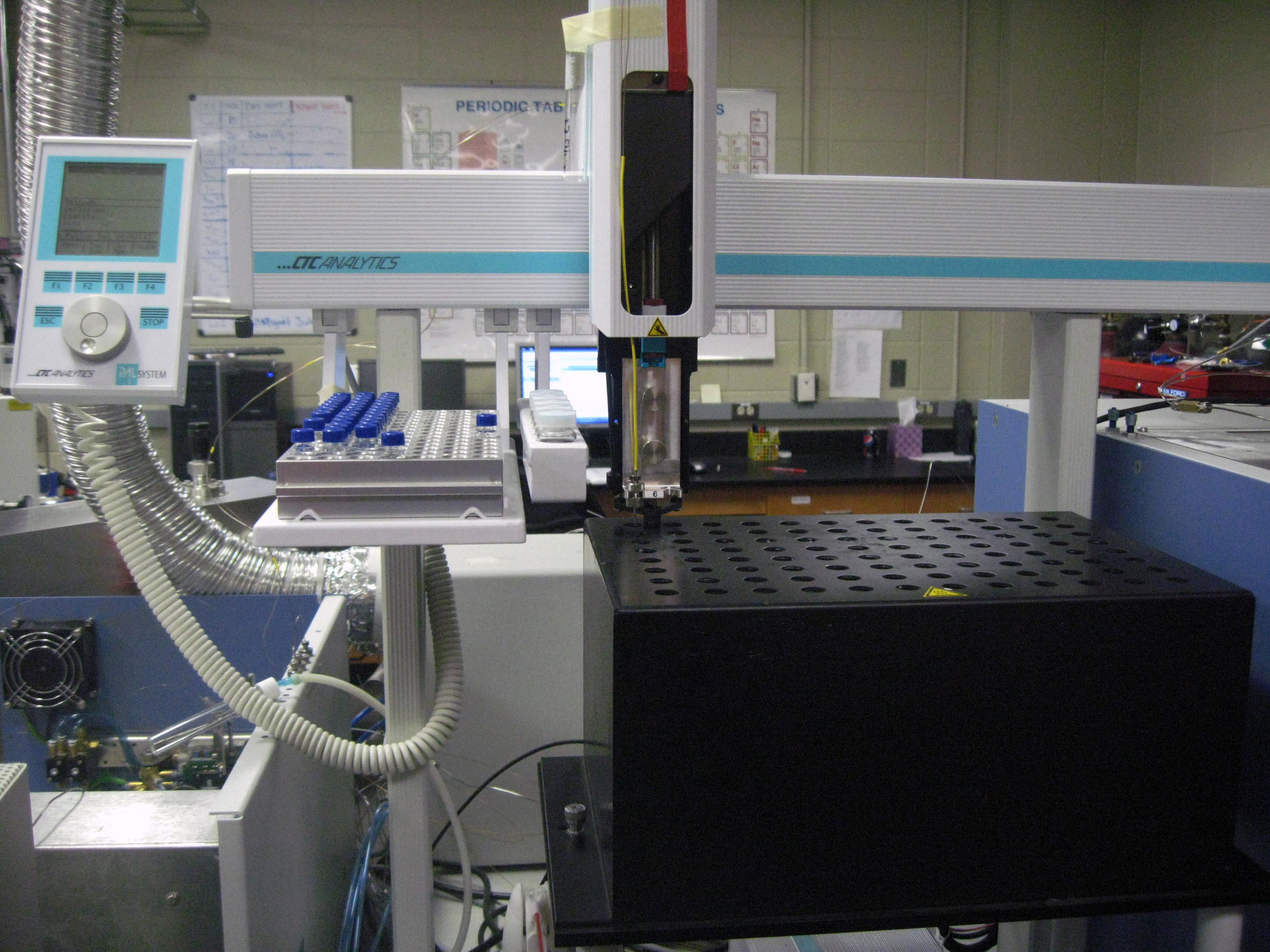Critical Zone Gas Analysis
The critical zone is the region between the water table and the top of the tree canopy. We have developed a series of capabilities to measure isotopic compositions and concentrations of gases using very small sample sizes. This allows for very high precision and high spatial resolution within the critical zone. We are currently focused on carbon dioxide, oxygen, argon, nitrogen and methane. Samples collected in the field are transported to the laboratory for automated analyses.
Solid Carbonates

δ18O and δ13C values are measured from solid carbonates with a Gas Bench coupled to a CombiPal autosampler and a heated sample block. Approximately 0.25-0.5mg of carbonate is weighed into 12ml Exetainer vials that are helium purged. 103% H3PO4 (s.g.=1.90) is added to each vial and equilibrated at 50°C to form CO2 . Vials are flushed with helium using the Combipal to sample CO2 multiple times with a 100microliter sample loop. δ18O and δ13C values are measured using a Thermo MAT253 isotope ratio mass spectrometer.
Dissolved Inorganic Carbonates (DIC)
The δ13C value of DIC can be measured in aqueous samples using the Gas Bench coupled to a CombiPal autosampler and a heated sample block. Depending on concentration, a volume of sample is added to helium purged 12ml Exetainer vials. 103% H3PO4 (s.g.=1.90) is added to each vial and equilibrated at 50°C to form CO2 . Vials are flushed with helium using the Combipal to sample CO2 multiple times with a 100microliter sample loop. δ18O and δ13C values are measured using a Thermo MAT253 isotope ratio mass spectrometer.
Soil Gas
Carbon and oxygen isotope ratios are measured from soil gas samples that are collected in the field using a Gas Bench coupled to a CombiPal autosampler. Concentration of CO2 from soil samples can vary significantly depending on seasonality, moisture content and depths. In addition these variations, high concentrations of nitrogen and oxygen can interfere with mass spectrometer measurements. Our methods utilize sample dilution and CO2 cryofocusing for precise measurements. With these techniques, we can measure down to 100nanomols of CO2.
Water

We use CO2 equilibration to measure δ18O values from water samples. Approximately 0.5ml of water is added to a 12ml Exetainer vial which is then sealed and purged with a mixture of Helium and CO2 and equilibrated at 25°C. After equilibration the Combipal autsampler flushes each vial with helium to sample CO2 multiple times with a 100microliter sample loop. δ18O are measured using a Thermo MAT253 isotope ratio mass spectrometer.
A TCEA (Thermal Conversion Elemental Analyzer) coupled to a Combipal autosampler is used to measure hydrogen isotope ratios (δD values) from samples of water. Less than 1microliter of water is injected into the TCEA that is packed with glassy carbon and heated to 1450°C. Water pyrolysis products: CO and H2 are separated using a gas chromatography column. δD values are measured using a Thermo MAT253 isotope ratio mass spectrometer.

